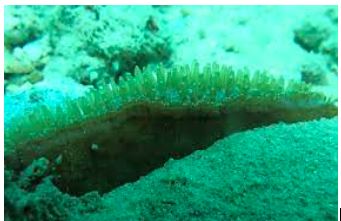

23rd June 2022 (6 Topics)
Context
Scientists have recorded four species of azooxanthellate corals for the first time from Indian waters.
About
- The non-reef building, solitary corals were found in the waters of Andaman and Nicobar Islands.
- These groups of corals are deep-sea representatives, with the majority of species reporting from between 200 m to 1000 m.
- Their occurrences are also reported from shallow coastal waters.
- The new records have been published in Thalassas- An International Journal of Marine Sciences.
- About 570 species of hard corals are found in India and about 90% of them are found in the waters around Andaman and Nicobar Islands.
- Andaman and Nicobar are one of the ancient and oldest ecosystems of corals that share less than 1% of the Earth’s surface but they provide a home for about 25% of marine life.
What are azooxanthellate corals?
- Azooxanthelate corals are a group of corals that do not contain zooxanthellae and derive nutrition not from the sun but by capturing various forms of plankton.
- They belong to the genus Truncatophlebellum (belong to the same family Flabellidae) from Indian waters.
- However, the zooxanthellate corals are restricted to shallow water only unlike azooxanthellate.
The four species found are:
- Truncatoflabellum crassum
- T. incrustatum
- T. Irregular
- T. Krasum
What are the ideal environmental conditions for corals to grow?
- Shallow water: Coral reefs need to grow in shallow parts of the water. The surface of the reef shouldn’t be more than 80m from the water surface. The Zooxanthellae need adequate sunlight for their photosynthesis processes.
- Semi-hard or hard surface: The semi-hard or hard surface is a precondition for compaction, cementation and solidification of the coral polyps skeletons.
- Clear water: The beautiful coral polyps perish in areas filled with sediment-filled waters. Moreover, they cease to exist in opaque waters. This is because the presence of sediments and opaque water limits the passage of sunlight to the algae that sustains their life.
- Warm water: Coral reefs are directly connected with the warm oceanic waters. The temperature of the water must be around 20 degrees. Hence, coral reefs generally prevail on the eastern coasts of continents. However, this is not true in the case of India as the eastern waters are filled with high amounts of sediment matter.
- Saline-filled waters: The slight salt in ocean waters is extremely important for the development of coral polyps. The polyps extract calcium from the waters to protect their skeletons. Hence, mild salinity is a necessity for coral reefs to flourish.
- Rich supply of nutrients: Coral reefs flourish in sea waters because ocean waves support the constant supply of rich nutrients. Coral polyps multiply faster when supplied with nutrients.
|
Corals in India
Types of coral reefs in India India has three major prevailing types of coral reefs:
Atolls: Atolls are formed on mid-oceanic ridges. They are shaped circularly or elliptically and are surrounded by seas on all four sides and have shallow waters in the center called a lagoon. |
More Articles




